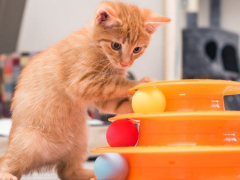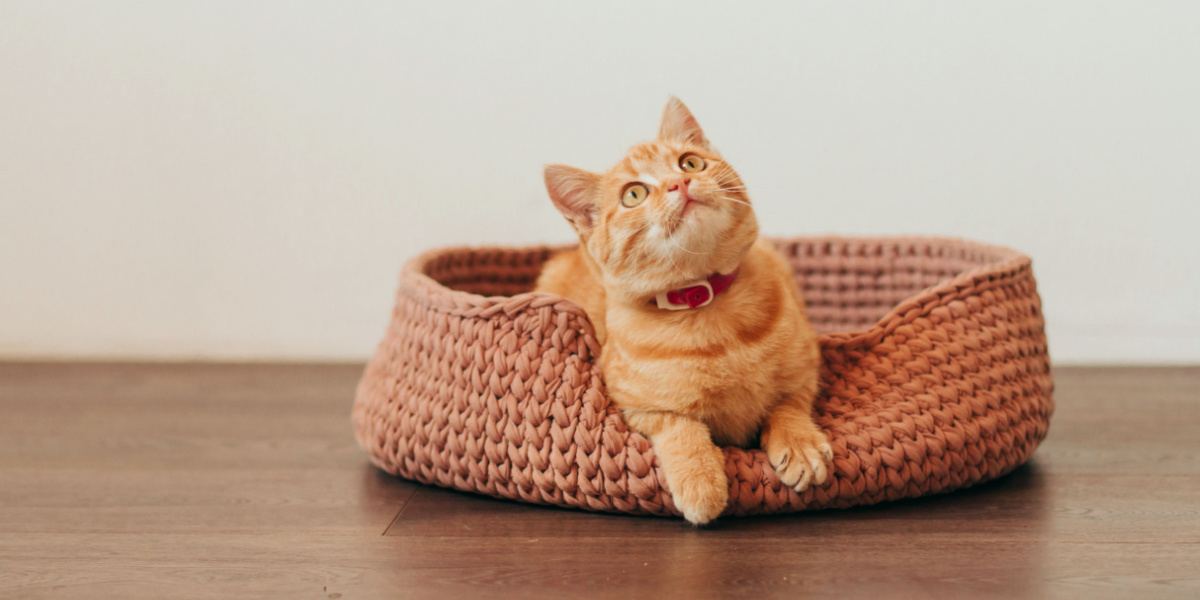
I’m sure we all know how it feels to be in a situation of stress—that nervous tummy feeling, the rise in heart rate and blood pressure, and the feelings of fear and agitation. Human coping methods for stress vary. We might seek out a loved one to help us calm down, take a long bath, or exercise. Cats can feel stressed too, leading to fearful, aggressive, and anxious behaviors.
Key Takeaways
Cats can suffer from both acute and chronic stress, which can manifest in changes to body language and behavior.
Understanding the causes of feline stress can help avoid these triggers, or to lessen the impact.
Cats can be calmed by providing hiding places, plentiful and accessible resources, play, owner interaction, sensory input, and pheromones. If concerned about your cat’s health or behavior, always consult a veterinarian.
Understanding where stress stems from and recognizing key features of cat behavior and body language can help a cat owner to implement strategies to induce some calm. An anxious cat is not a happy cat, and learning how to calm down a stressed cat is important for the optimal health and wellness that your cat needs.
Also Read: 10 Ways To Calm Hyperactivity In Cats
Why Might A Cat Need To Calm Down?
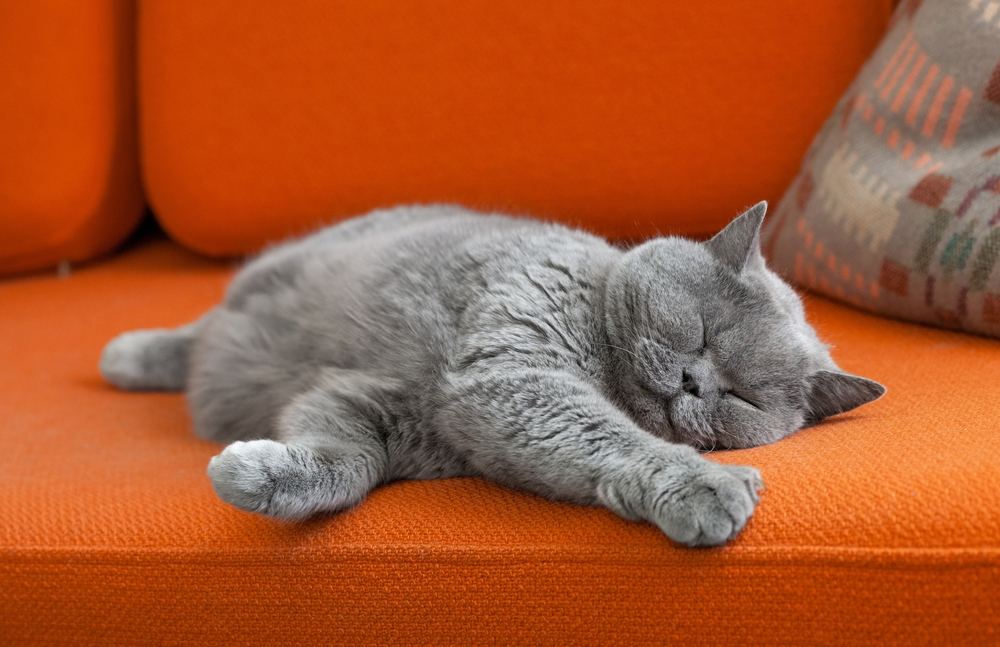
Cats can experience stress acutely (to a single, fleeting situation) or stress might be ongoing.
As most pet parents quickly realize, cats are creatures of habit. They like their routines, their favorite spots, and their little daily rituals. This means that any disruptions to their day-to-day life can be a source of stress, which can make a cat feel anxious or fearful.
Stressful situations can be classified into two areas: acute and chronic. Acute stressors are sudden and short-lived, such as loud noises or an encounter with the neighbor’s dog. Chronic stressors are ongoing problematic situations causing your cat anxiety, such as a new pet they haven’t bonded with, or competition for a key resource such as cat food.
Also Read: New Cat Owner Checklist
Signs Of Stress In Cats

You can pay attention to your cat’s body language and behavior to tell you if they are feeling stressed.
Our cats can be mysterious creatures, so how do we even tell what a stressed or scared cat looks like? The key is to pay careful attention to your cat’s body language and behaviors and learn how to interpret them. Our pets cannot tell us they’re feeling anxious, but they can always show us.
Acute stress in cats is easier to spot. Fearful, unsure cats will display a tense, hunched posture, with fur puffed up and tails often twitching, or tucked around themselves. Their ears might be back, their pupils dilated, and their gaze fixed. They might use negative vocalizations such as a hiss or growl, display aggressive behaviors or retreat and hide away in a small, dark place.
Chronic stress can cause more insidious behavior changes. Anxious cats might hide away more, change their eating habits, and have altered interactions with family members or other pets.
They might toilet in inappropriate places, including urine spraying, or scratching at furniture and flooring. They might vocalize more than usual, display signs of separation anxiety, and even display aggressive reactions and behaviors.
Also Read: 7 Common Cat Vocalizations And What They Mean
Calming A Cat Down: Our 8 Proven Steps
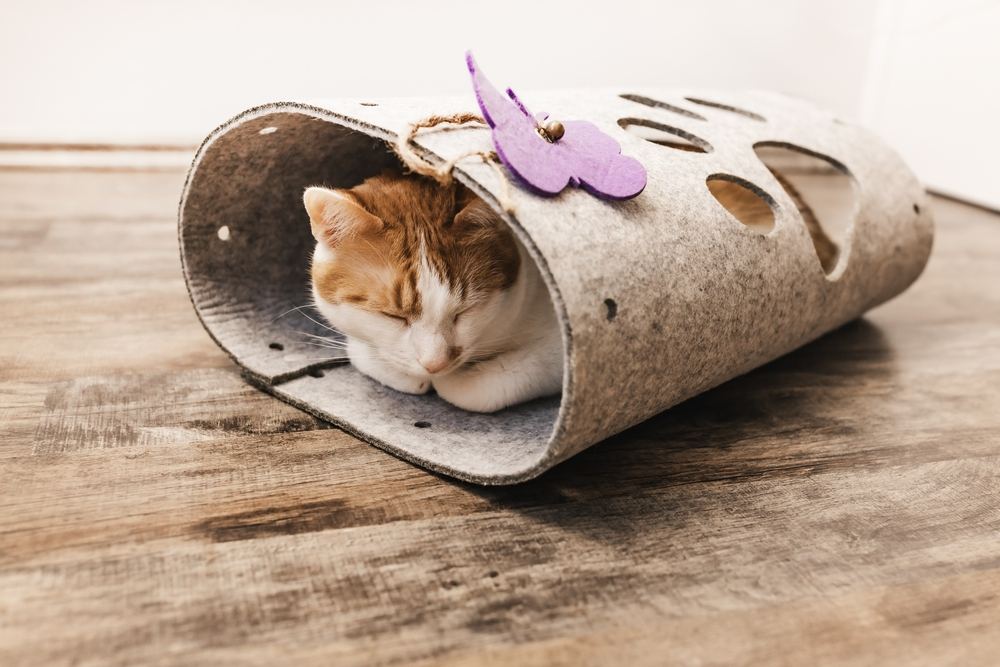
You can employ a number of strategies to help calm a stressed or fearful cat.
If your cat is showing signs of fear or stress, your priority will obviously be to help them. But how? As a veterinarian with a strong interest in cat behavior, I’ve worked with felines for years, and these are my top strategies.
1. Discover The Source
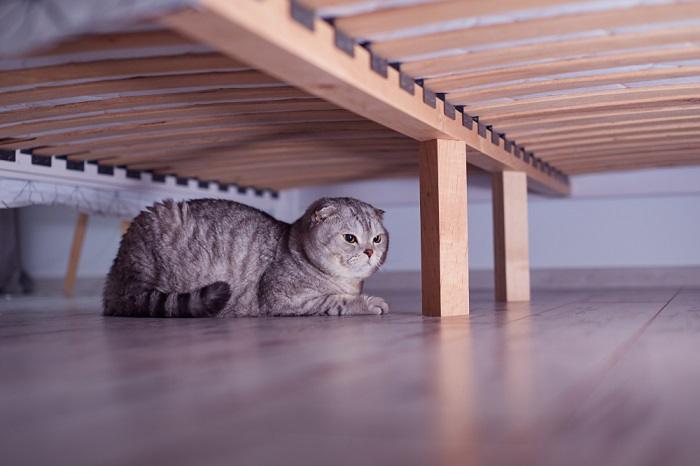
Find out what is triggering your cat’s stress so you can figure out how to make the situation better for them.
If you’re concerned that your cat isn’t entirely happy, it’s time to bring out your inner detective. Acute stressors are often fairly easy to spot: If your cat spooks and hides under the bed when a thunderstorm hits or gets aggressive every time the cat carrier makes an appearance, the source is pretty clear.
Chronic stressors are much more difficult to pinpoint, so pay careful attention to your cat’s body language and behavior. Multi-cat households are a common source of chronic stress, as are new pets, new family members, and longer-term disruption to a cat’s environment such as noisy building work. Knowing the source of the anxiety can help prevent it, or at least lessen the effects.
Also Read: The 10 Things That Cats Hate Most
2. Provide A Safe Place

Cats feel safest when they are up high and have places to retreat or hide.
Our domestic cats are descended from wild cats, which, as well as being predators, were also potential prey for larger animals. Cats are therefore often fearful of wide, open spaces, and naturally, seek out safe spaces to hide in when scared. Felines often possess a natural instinct to be up high: this gives them an opportunity to survey their environment while remaining protected.
Your cat will feel safer and more secure if they have a variety of safe spaces to retreat to when needed. Include some vertical spaces such as a cat tree or elevated cat bed. Hiding places should be cozy, dark, small, and quiet. Provide your cat with escape routes when in potentially stressful situations, such as interacting with other pets or new people.
Also Read: What Is The Best Place To Put A Litter Box?
3. Ensure Access To Resources
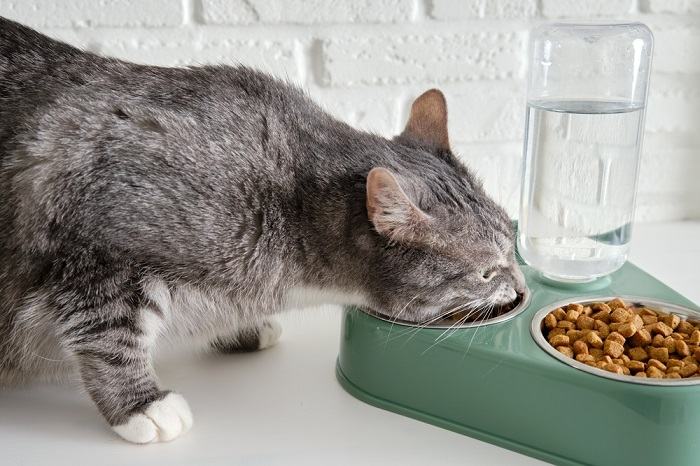
In homes with multiple cats, provide enough bowls, beds, and scratchers for each cat, and at least one litter box per cat plus one extra placed in different areas.
All cats have certain basic needs: food, water, litter box, bed, cat toys, and more. It is not enough to merely provide these resources. Instead, some thought should be put into their number and placement. Households with multiple cats can be unwitting sources of stress and conflict if there is competition for resources.
Cats are territorial and having to enter another cat’s territory to access a litter box or food bowl can be anxiety-inducing for a kitty. Provide plenty of resources in multiple areas around the home, so that competition is low and access is always available. There’s more information about setting up your home for a new cat here.
4. Read The Cat
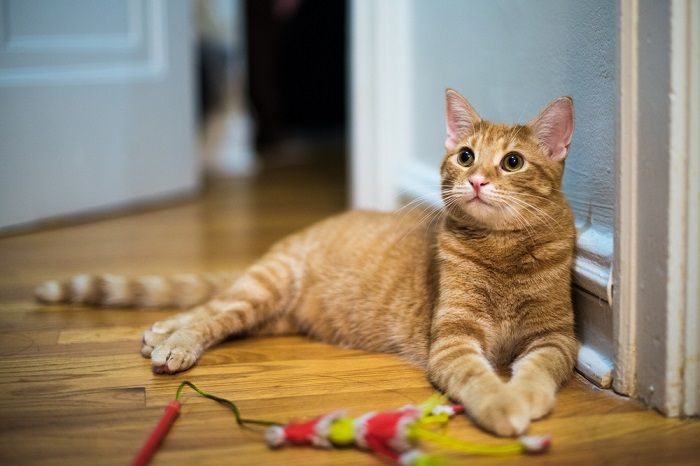
Learn your cat’s individual preferences for physical touch, and let them initiate cuddles on their own terms.
Our pets are all individuals, with different personalities. Some cats love a cuddle; others are more aloof. It can feel natural to give your cat some physical affection if they are scared, to bundle them up in a big hug and make them feel safe and loved.
Offering cuddles might work for some cats, but it might just increase stress for others. The safest option is to be near your cat, reassure them with your presence and your voice, but allow them to come to you if they desire affection and physical comfort.
Also Read: 10 Proven Ways To Show Your Cat You Love Her
5. Use Their Senses
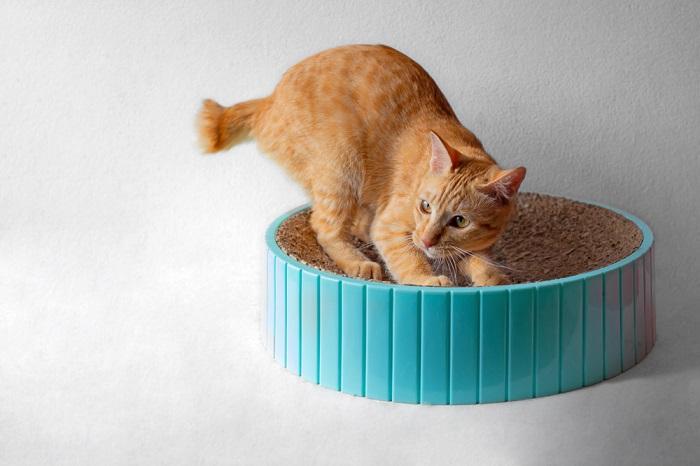
When cats scratch, they send messages by leaving behind visual marks and chemical pheromones.
Communication is very different for cats than it is in people, and playing to your pet’s strengths can have a calming effect on our feline friends. Cats use both scent and tactile communication, and use scratching as a kind of messaging system: both for themselves and to other cats.
Embrace this by providing multiple surfaces suitable for scratching around your cat’s environment, and teaching them how to use a scratching post. Scratching places should be placed in busy areas rather than tucked away.
Cat owners can also utilize scent in other ways. Allow your cat to rub their scent on you and other family members, and take an object that smells familiar to them along if they have to travel.
When introducing a new pet, try scent-swapping before you introduce them visually and physically. Place a few drops of relaxing essential oils, such as lavender, in a diffuser (kept well away from curious paws!) and use, supervised, in times of stress or anxiety as a calming aid. Some cats find catnip to be very relaxing.
You can also involve your cats’ other senses to engage their calmer feelings. Try playing music or white noise during a storm, or leaving on some cat TV if you have to go out to work.
Also Read: The 5 Best Interactive Cat Toys for Bored Cats
6. Pheromones
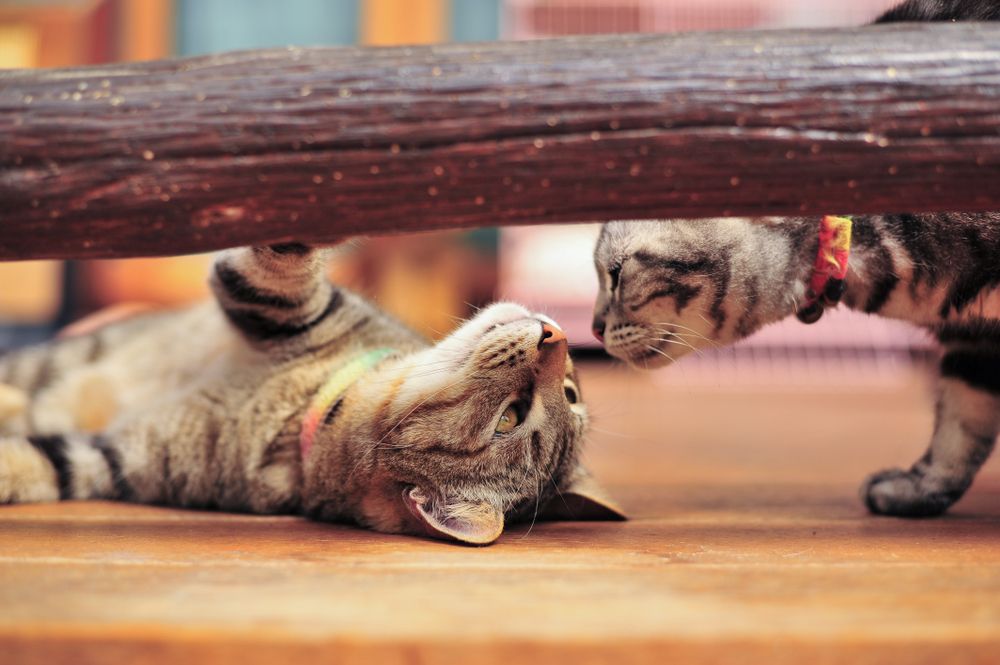
Synthetic pheromones delivered to the environment via sprays or diffusers can help cats feel calmer during stressful situations.
Pheromones are chemical messages that cats use to communicate with themselves and other cats. They can give information about territorial boundaries, mark out safe spaces, and identify trusted companions.
The feline facial pheromones invoke safety and comfort and have been formulated in a synthetic version (Feliway). This pheromone can be used as a spray or via household diffusers to relax and calm anxious cats.
Also Read: Best Calming Aid For Cats
7. Playtime
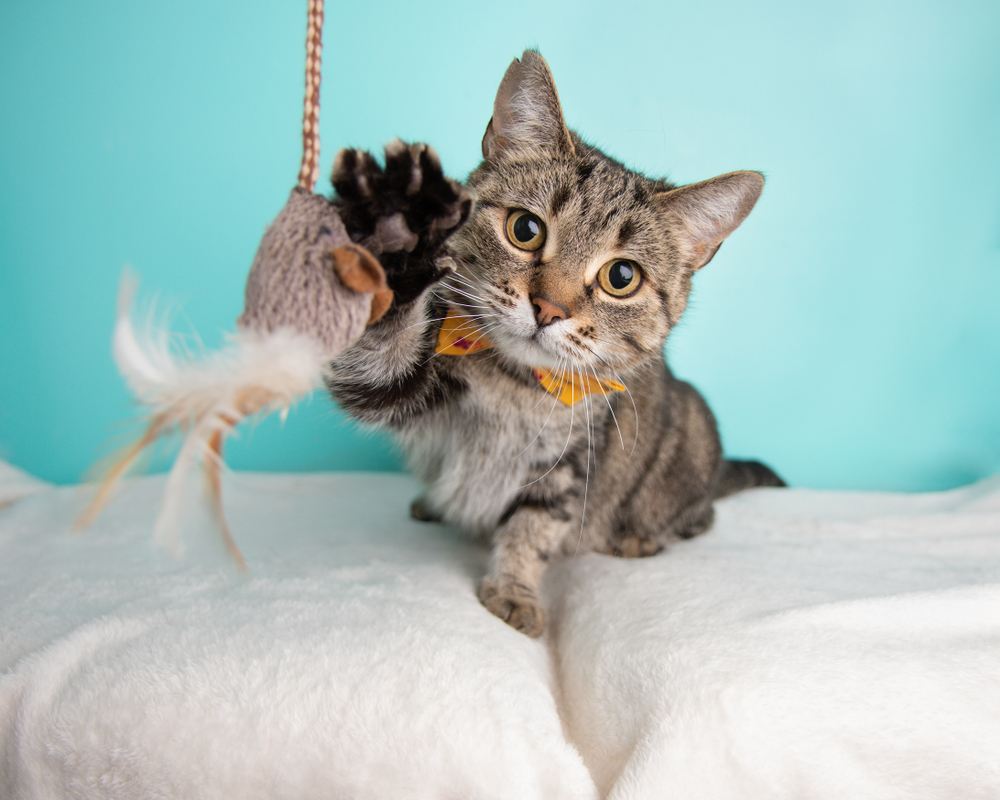
Play redirects nervous energy in a positive way, resulting in a calmer feeling.
If your cat seems on edge and full of agitated energy, using active play can help redirect that energy and bring about some calm. Toys provide both mental and physical stimulation, reducing levels of stress hormones and enhancing the cat-owner bond. Building regular play sessions into your cat’s routine can be very beneficial for their health and wellness.
Also Read: How To Safely Play With A Cat, According To A Cat Behaviorist
8. Seek Professional Help
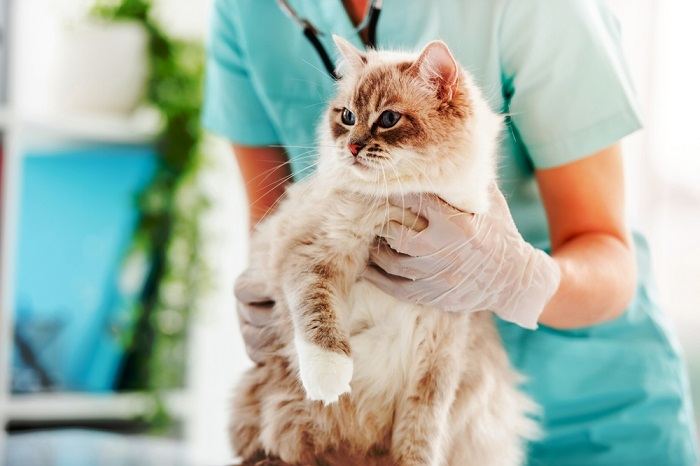
Your veterinarian or a veterinary behaviorist can help figure out what is causing your cat’s stress.
If your cat is showing negative behaviors, body language, and communication, the above tips should all help to provide some calm. Chronic stress, however, has been linked to various health conditions, including urinary and gastrointestinal disorders.
If your cat suffers from anxiety, is showing abnormal behaviors, and doesn’t seem quite content, it is always recommended to visit a veterinarian. Your vet can rule out medical disorders, recommend medication or supplements, and refer on to a certified behaviorist if appropriate.
Also Read: 13 Common Cat Anxiety Medications: What You Need to Know
Calming A Cat: Final Thoughts

Cats are sensitive creatures, subject to stress and anxiety just as we are. Providing your cat with a secure home environment, with plenty of hiding places, resources, human interaction, and calming scents and sounds can all help create an atmosphere of calm.
Recognizing your pet’s triggers and being able to avoid them and provide support is essential. If you are concerned about your cat’s health or behavior, always contact a veterinarian.
Also Read: The 8 Best Cat Bowls (Purchased And Tested)
Frequently Asked Questions
How do you calm an overstimulated cat?
Provide plenty of escape routes from stressful circumstances, and ensure access to dark, quiet hiding places. Cats like to be up high, so an elevated bed or perch is great. Calming pheromones, scents and sounds can all help calm a cat down.
What calms cat anxiety?
Finding the trigger to a cat’s anxiety can help avoid the stress or act quickly to reduce the effect. Provide plenty of hiding places, and easy access to resources such as food and litter boxes, and form a strong bond with plenty of interaction and playtime. Pheromones can be used to help reduce stress.
What smell calms cats?
Pheromones can be used to enhance a cat’s feeling of safety and security. Scents such as lavender are also naturally calming but must be kept out of pets' reach.




